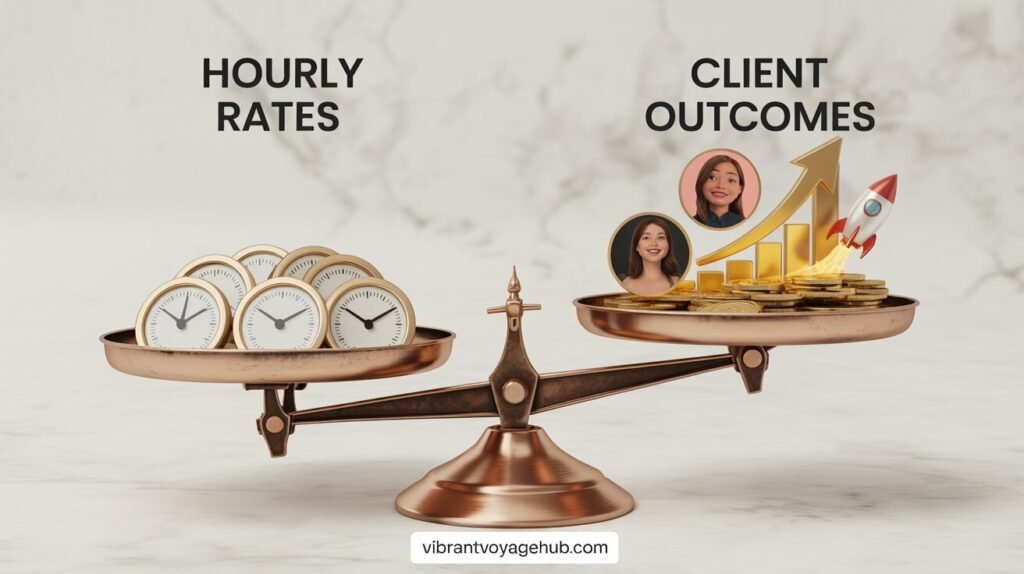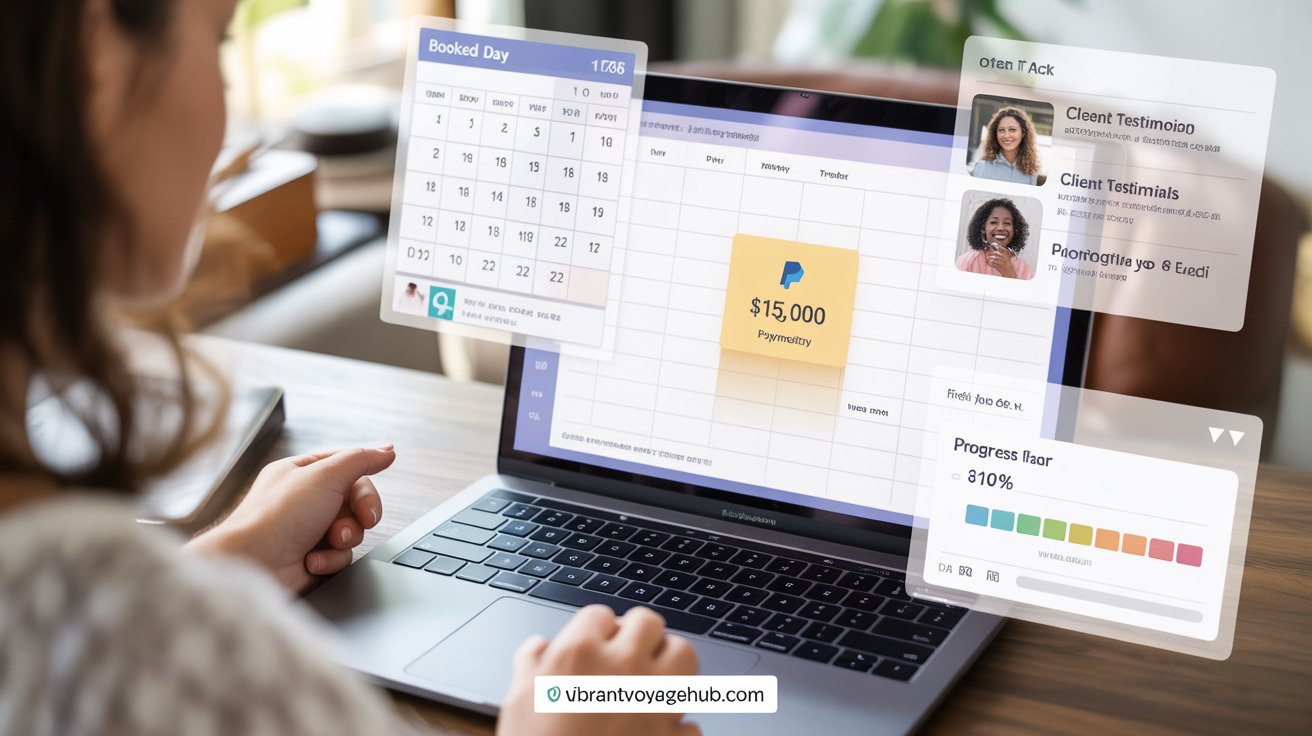How I Made $15,000 in One Month as a Virtual Assistant (Proof Inside)
I climbed the corporate ladder quickly, but the stress and burnout were taking a toll. In 2011, my life seemed perfect on the outside – a nice car, a good salary, and a growing savings account. However, I was doing the job of three different people, and I knew I couldn’t sustain that for decades. I yearned for the freedom to work remotely and have flexible hours.
This desire sparked my journey into the world of virtual assistance. I started exploring this path, and it eventually led me to earn $15,000 in a single month. For those interested in starting a similar business, understanding the initial investment required is crucial. My experience has shown me that with the right skills and mindset, it’s possible to achieve significant financial rewards in this field.
Key Takeaways
- Discover how to transition from a corporate job to a successful virtual assistant.
- Learn the key factors that contributed to my $15,000 month.
- Understand the importance of flexibility and remote work.
- Explore the initial investment needed to start a virtual assistant business.
- Gain insights into the mindset shifts required for success in this field.
My Journey from Corporate Burnout to Virtual Freedom
It was a moment of desperation that led me to discover the world of virtual assistance. After being denied a meager 2% raise despite my years of dedication and hard work, I hit rock bottom. This moment marked the beginning of my journey towards freedom and a more fulfilling career.
The Breaking Point in My Corporate Career
The denial of a 2% raise was the final straw in my corporate career. I felt undervalued and unappreciated, and it sparked a sense of frustration and disillusionment. The moment I got back to my desk, I started looking for virtual assistant work, and within 24 hours, I had landed my first client on Upwork. This client was doing business operations and client management, and I worked with her for almost 10 years.
I had to juggle my day job with my new virtual assistant work, waking up early and working during my lunch breaks. I was determined to make this transition successful, and it took a lot of hard work and dedication.
Why I Considered Virtual Assistant Work
I began researching virtual assistant work as a potential solution to my burnout. Despite initial hesitation about taking what I perceived as a step down from my corporate title, I was drawn to the flexibility and potential of virtual assistance. I was attracted by the idea of having more control over my time and income, and being able to work with various clients and businesses.
As I started working with my first client, I realized that this new path offered me the opportunity to build a business that could potentially replace my corporate income. It took four months as a virtual assistant to reach a bare-minimum income level, and by the end of my first year, I was making around $65,000.
My journey was not without its challenges, but it ultimately led me to a more fulfilling and flexible career as a virtual assistant.
Overcoming My Initial Resistance to Becoming a “Just an Assistant”
Discovering virtual assistant work online sparked a mix of emotions, including resistance due to my ego and concerns about what others might think. I felt like I was too experienced to be “just an assistant,” and I worried about the optics of taking on such a role.

The Stigma I Had to Get Past
I had to overcome both internal and external stigma. Internally, my ego and identity were tied to my corporate title, making it hard to accept a role that seemed like a step down. Externally, I was concerned about what others would think about my career change. It wasn’t until 2014 that I finally got past my “fear of optics” and began to embrace the virtual assistant path fully.
Realizing the Value and Potential of VA Work
As I started my VA business, I was initially happy to take on any client. However, I quickly realized that some clients didn’t understand the role of a virtual assistant. They expected me to work specific hours and be constantly available, making me feel like an employee rather than a self-employed individual. This experience forced me to reevaluate my approach to client relationships and business structure. I learned to educate clients about the value I provided and establish clearer boundaries, which became a turning point in my business.
By doing so, I was able to transition from feeling like I was “just an assistant” to being a successful virtual assistant business owner, providing valuable skills to my clients and achieving the freedom I initially sought.
Landing My First Clients and Building Momentum
Within 24 hours of deciding to become a virtual assistant, I secured my first client on Upwork. This rapid success was a significant morale booster and set the stage for my journey as a virtual assistant. My experience on Upwork was instrumental in helping me understand the importance of a well-crafted proposal.
How I Found My Very First Client
I landed my first client by submitting a proposal for a project that matched my skill set. I focused on highlighting my corporate experience and how it translated into valuable skills for the client’s project. This approach proved effective, as my proposal was successful, and I began working with the client on business operations and client management tasks. Notably, this client relationship has endured for nearly a decade, demonstrating the potential for long-term partnerships in the virtual assistant business.
Balancing My Day Job While Building My VA Business
To build my virtual assistant business, I had to balance my day job with client work. My daily routine involved waking up early to complete client tasks, utilizing my lunch break to work on VA tasks, and finishing any remaining work in the evenings. This balancing act was challenging but necessary to build momentum. After a month of working with my first client, I gave my three-month notice at my day job, having calculated a bare-minimum income needed to cover my expenses. It took four months as a VA to reach this income level. During this transition, I continued to find more clients through Upwork and networking on LinkedIn, leveraging my notice period to build my client base while still having a financial safety net.
By the end of my first year, I had built a $65,000 business that replaced my corporate salary. The momentum I gained during this period taught me valuable lessons about time management, client acquisition, and the importance of delivering exceptional work to generate referrals. These skills have been crucial in my continued success as a virtual assistant.
The Critical Shift: From Trading Time for Money to Value-Based Pricing
The turning point in my virtual assistant career was shifting from hourly rates to a value-based pricing model. By 2017, I was on the verge of giving up on my entrepreneurial journey and returning to a 9-to-5 job. Despite knowing I was adding significant value to my clients’ businesses, I wasn’t being compensated fairly for my work.

I stuck with my business because I was convinced that my work was making a difference. However, I realized that my hourly rate model was penalizing me for becoming more efficient. For instance, when I first started scheduling emails, it took me around 30 minutes. After a month of practice, I was able to do it in 15 minutes. Under the hourly rate model, this increased efficiency actually reduced my earnings.
Why Hourly Rates Were Limiting My Income
The hourly model created a ceiling on my income, regardless of the value I provided to my clients. As I became more skilled and efficient, I was essentially punished for my productivity. I knew I needed to change my compensation model to one that rewarded my skills and the value I brought to my clients’ businesses.
As “You can’t get what you want by being more efficient at doing something that’s not valued.” This quote resonated with me as I transitioned my business model.
Implementing a Retainer Model That Rewarded Efficiency
After researching alternative pricing models, I decided to implement a retainer model based on the value I provided to my clients. I analyzed the revenue impact of my work, using concrete evidence like sales generated from emails and campaigns I managed. I presented my clients with a new pricing structure based on this analysis, and while I lost some clients, those who stayed were happy to pay more for the value I provided.
The retainer model not only increased my income but also gave me the freedom to manage my time more effectively. I no longer had to track my hours, and I could take time off without losing money. This shift aligned my interests with those of my clients; the more efficient and effective I became, the more I earned while delivering better results.
- I analyzed the value I added to my clients’ businesses and presented them with a pricing structure based on that research.
- The retainer model removed the time-to-money exchange, allowing me to focus on delivering high-quality work.
- My clients recognized my value and were willing to pay significantly more under the new pricing structure.
How I Made $15,000 in One Month as a Virtual Assistant (Proof Inside)
The $15,000 month wasn’t a fluke; it was the result of building a robust business model as a virtual assistant that delivers exceptional value. My success is rooted in providing high-quality services that meet the evolving needs of my clients.
As I reflect on my journey, it’s clear that the key to my success lies in the premium services I offer and the way I’ve structured my business to maximize income.
The Specific Services That Commanded Premium Rates
My business model is centered around delivering high-value services that command premium rates. These include business operations management, strategic planning, content creation, and specialized marketing support. By focusing on these areas, I’ve been able to differentiate myself from other virtual assistants and attract high-paying clients.
For instance, I work closely with my clients to understand their business goals and develop strategies that drive results. This not only adds value to their businesses but also justifies the premium rates I charge.
My Income Breakdown and Revenue Streams
My income as a virtual assistant comes from a variety of sources, primarily through retainer fees paid by my clients. On average, I work with three to four clients at a time, and our relationships typically last around five years.
| Revenue Stream | Average Monthly Income |
|---|---|
| Retainer Fees | $12,000 |
| Special Projects | $2,000 |
| Professional Development | $1,000 |
| Total | $15,000 |
This diversified income stream not only provides financial stability but also allows me to grow my business sustainably. By focusing on delivering exceptional value to my clients, I’ve been able to achieve significant financial success as a virtual assistant.
Building Long-Term Client Relationships That Pay Off
I’ve discovered that the secret to a lucrative virtual assistant business is not just about delivering tasks, but about fostering enduring client connections. As a virtual assistant, I’ve had the privilege of working with clients over the years, and I’ve learned that building long-term relationships is crucial to my success.
Why My Clients Stay With Me for Years
My average client relationship lasts five years, creating stability and predictable income that allows me to focus on delivering exceptional value rather than constantly hunting for new clients. So, what makes my clients stay with me for so long? For one, I’ve made a conscious effort to evolve from a task-doer to a strategic partner who understands their business holistically and proactively identifies opportunities for improvement.
I’ve cultivated deep trust with my clients by consistently over-delivering, maintaining excellent communication, and genuinely caring about their business success. As a result, our relationships have evolved from doing tasks to becoming strategic partners in their business. This allows me to look holistically at a client’s business and see where I can help. For instance, I’ve been flown across the country by one client to help her run retreats, and another client signed me up for a mastermind program for sales and marketing.
“The biggest risk is not taking any risk…”
How I Negotiate Regular Rate Increases
My approach to negotiating regular rate increases involves timing, evidence of value, and confidence. I raise my rates annually based on the measurable impact I’ve had on their business. For example, when I started working with my first client nearly a decade ago, she was paying me $1,500 a month, and now she pays me over $6,000 a month.
| Year | Rate | Revenue |
|---|---|---|
| 2014 | $1,500/month | $18,000/year |
| 2023 | $6,000/month | $72,000/year |
Some clients have actually offered to increase my rates without me asking after working together for about a year, recognizing the value I provide and wanting to ensure I stay long-term. This mutual investment in our working relationship creates a virtuous cycle – clients invest in my growth, which helps me deliver even more value, justifying higher rates.
Building these long-term relationships takes time and patience, but the payoff is substantial both financially and in terms of work satisfaction. By transforming transactional client relationships into strategic partnerships, I’ve been able to create a stable and lucrative business as a virtual assistant.
The Skills and Tools That Set Me Apart from Other VAs

To differentiate myself from other virtual assistants, I focused on developing high-demand skills and leveraging cutting-edge technology. As a result, I’ve been able to command premium rates and attract a loyal client base.
Specialized Skills That Allowed Me to Charge More
My toolkit includes a range of valuable skills such as operations management, strategic planning, content creation, email marketing, and client relationship management. By developing expertise in these areas, I’ve been able to offer high-value services that clients are willing to pay for.
For instance, my ability to manage complex operations and create effective content has enabled me to help clients achieve their business goals, resulting in long-term partnerships and referrals.
Investments in Training That Paid Off Exponentially
I’ve invested in various training programs, including a marketing mastermind course that significantly improved my skills in social media marketing and email marketing automation. One of my clients even sponsored my participation in this program, recognizing the value it would bring to their business.
Such investments have consistently paid off, allowing me to increase my rates and attract new, higher-paying clients. For example, a $1,000 course enabled me to boost my monthly retainer by $500, resulting in a substantial return on investment over time.
Conclusion: My Advice for Aspiring Six-Figure Virtual Assistants
After achieving my goal of earning a six-figure income as a virtual assistant, I’m sharing my insights to help others. My journey wasn’t an overnight success but a result of strategic decisions and a willingness to adapt.
The key to my success lies in developing specialized skills that command premium rates, implementing a value-based pricing model, and building long-term client relationships. It’s also crucial to regularly raise your rates and invest in continuous learning.
Reaching six figures doesn’t mean you keep the entire amount; after taxes and business expenses, my take-home pay was initially much less. However, the freedom and flexibility of being a virtual assistant make it worthwhile. My advice to aspiring virtual assistants is to focus on the value you provide rather than the hours you work. This mindset shift is what transforms a side hustle into a thriving six-figure business.
FAQ
What is the average hourly rate for a virtual assistant?
How do I find clients as a virtual assistant?
What skills are most in demand for virtual assistants?
Can I run a successful virtual assistant business part-time?
How do I determine my pricing as a virtual assistant?
What tools and software do virtual assistants use?
Can virtual assistants earn a six-figure income?
editor's pick
latest video
news via inbox
Nulla turp dis cursus. Integer liberos euismod pretium faucibua




